New systems for special operations forces
Among the recently developed models of small arms, the Sig Sauer MCX SBR assault rifle with a shortened barrel, adopted by several units of the naval special forces, stands out. SIG MCX can be converted between 5,56 × 45 mm, .300 AAC Blackout and 7,62 × 39 mm calibers. In this case, the standard 5,56-mm shop STANAG is used for the first two, and for the third - a specially designed STANAG-compatible shop
It is difficult to name a category of equipment that would not be demanded by special forces, since these units, as a rule, want to get what they need, and purchases are often associated with their non-standard requirements.
Mobility, communications, firepower, protection, information gathering, and these are just a few of the many areas that are of interest to the Special Operations Forces (MTR) units whose list of purchased property is almost endless. The general trend is that new technologies and equipment are the first to fall into the hands of the SSO, but when the SSOs get something better, some of them are often transferred to conventional armed forces. This article does not pretend to describe all the latest developments, but is aimed only at describing those newest systems that may become part of the MTR equipment in the near future.
Fire power
Direct operations remain one of the main activities of the MTR, and therefore small arms weapon and ammunition is a key component of their equipment. Despite the fact that discussions on new calibers and new types of ammunition, held mainly in the United States, were sometimes quite lively, few were translated into reality, although some systems were delivered to the MTR units, mainly for testing. The .300 Blackout cartridge developed by Advanced Armament Corporation is probably the one that attracts special attention from the SSO community.
Many companies have developed their weapon systems in this new caliber. Among them, the Sig Saner MCX assault rifle, which was put into service by the Dutch naval special forces, the Berlin police, and more recently the Italian Navy special forces, achieved the greatest success. In February, the US Special Operations Command ordered the 2018 conversion kits Sig Sauer MCX Personal Defense Weapon (PDW) to remake the M10A4 carbine into PDW (individual self-defense weapon - a term used in Western countries to arm the so-called military "Second line" [crews of combat vehicles, artillery calculations and others]). According to available information, these 1 kits were ordered for evaluation tests and delivered on time.
There remains a problem with the effectiveness of the 5,56x45 mm cartridge, which many consider to be insufficient, calling for a return to the caliber 7,62x51 mm, which provides a longer range of real fire and more energy. The new cartridges of these calibers currently being developed provide a greater range and penetrating ability, which is very important given the wide distribution of body armor, including among insurgents and militants. MTRs are usually the first to receive and test these new cartridges. As for light weapons systems, in recent times many MTR units in Europe have chosen for themselves new small arms, but in most cases the choice was made in favor of traditional solutions.
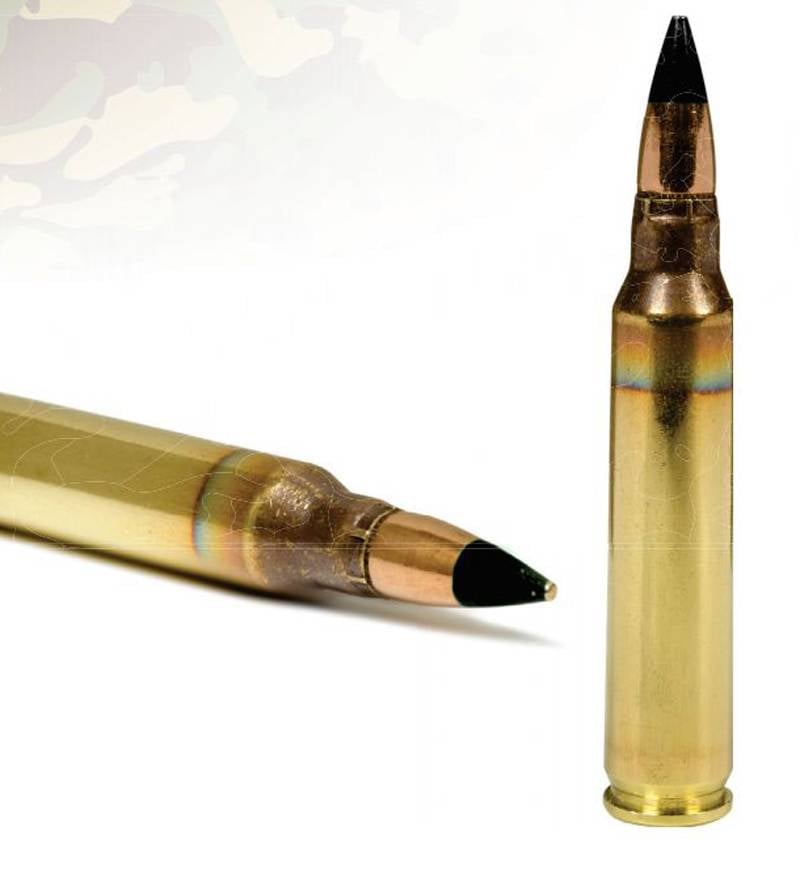
Improving 5,56-mm ammunition has become the goal of many companies. Pictured is the armor-piercing cartridge 5,56 APM of the Israeli company IMI Systems
In February 2018, the Israeli company IMI Systems announced the development of a new ammunition 5,56x45 mm, which "combines the advantages of cartridges caliber 5,56 mm and 7,62 mm." During the development, the experience gained by the customers of IMI Systems was taken into account, mostly, of course, by the Israeli armed forces, which, according to the company, are already testing the cartridge and it is no secret which units got it first. The new 5,56-mm cartridge under the designation APM (Armor Piercing Match) has greater accuracy and penetration compared to the standard 5,56-mm cartridge. In addition, tests have confirmed that the new ammunition has better accuracy at 30% compared to standard 7,62-mm cartridges at distances up to 550 meters and better penetration at distances 800 meters. When firing at a steel plate of the NATO standard 3,4 mm thick at this distance, the APM bullet reached 100% penetrability. The new 5,56-mm APM cartridge belongs to the FMJ-BT APHC type (Full Metal Jacket-Boat Tail, Armor Piercing Hard Core - a shell bullet with a tapered tail, armor-piercing with a hardened core), the cartridge weighs 73 gram, and the sleeve - 12,9 gram.
Among the many companies developing new and more efficient 5,56-mm cartridges, we see the Swiss RUAG Ammotec, which offers its own cartridge 5,56x45 LF HC SX
BAE Systems has completed the development of the new HP 7,62 mm (High Performance) cartridge, which has passed the entire qualification process in accordance with NATO standards. Compared to the standard 7,62-mm cartridge, in which the bullet weighs 144 grain (gran - 0,062 g), the HP cartridge has a bullet weighing 155 gran. Another difference is that the new bullet has a tip made of hardened steel, and the rear part is of lead, while the standard cartridge has a completely lead bullet; as for the charge, the one-component composition gave way to a two-component one. The steel sheet thickness of 3,5 mm increased from 600 to 1000 meters, 8-mm sheets from 250 to 450 meters and 5-mm sheets of rolled armored steel from 100 to almost 350 meters. Based on the experience of developing a larger caliber cartridge, BAE Systems also developed a new 5,56-mm cartridge EP (Enhanced Performance - improved performance). In this case, the bullet with a steel tip and a lead core was replaced with a bullet with a non-toxic hardened steel core, while the bullet weight remained the same 62 grain (like that of the SS109 cartridge bullet). Its performance did not improve as much as the original 5,56 mm cartridge already had a two-component charge and a steel tip. However, penetration capabilities increased from 600 to 850 meters for 3,5-mm sheets, from 250 to 350 meters for 8-mm sheets and from 100 to 250 meters for 5-mm sheets of armor steel.
Other companies have also developed solutions of this kind. The Swiss RUAG Ammotec offered its 5,56-mm LF HC + SX cartridge, while the British Stiletto Systems developed armor-piercing cartridges of the Russian and NATO calibers, all based on tungsten carbide core. Her cartridges passed complex tests in independent rifle centers, showing significant penetration characteristics. The company announced that the Ukrainian special forces operating in the Donbas are using its ammunition, although they have not provided information about the calibers.
As for the weapons, the MTR units of several Western countries have chosen new assault rifles, mainly 5,56x45 mm. The HK416 rifle from Heckler & Koch has become one of the bestsellers. The last news in this regard, came in February 208 year from the Netherlands, whose special forces already have in service the original version of the rifle. Under the new contract, they will soon begin to receive the A5 version, which is distinguished by an improved gas control for use with a silencer, refined with the lower barrel receiver, as well as numerous technical improvements to maximize the safety, reliability, compatibility of ammunition and longer service life.
In the autumn of 2017, Germany announced the selection of the HK416 rifle in the A7 variant for its land and sea special purpose units KSK (Kommando Spezialkrafte) and KSM (Kommando Spezialkrafte Marine); rifle under the new designation G95 and replace the rifle G36K in service. The A7 variant is a further development of HK416. The main innovations are as follows: a lightweight receiver pad with Hkey modular interfaces, cutting on the barrel muzzle to simplify the installation of a silencer, Cerakote coating to increase abrasion and corrosion resistance, and finally a fuse with 45 angles between protection and a single fire and between single and automatic fire. The 3,7 kg rifle will be supplied with an 14,5 "barrel length (368 mm). The contract is for the supply of 1745 HK416A7 rifles, including accessories; the first deliveries are scheduled for the beginning of 2019.
The Turkish Kale group is ready to begin supplying its KCR-556 rifle of 5,56x45 mm to the special forces of its country; the contract provides for the supply of a “five-digit” quantity, that is, more than 10000 units. However, the case will not be limited to special units, as the rifle must be adopted by the presidential guard, guard of high military officials, as well as the Turkish gendarmerie, responsible for maintaining public order in cases outside the jurisdiction of the police forces. According to available information, special forces have adopted a version with a barrel length of 7,5 inches, known as KCR-556 SI. The same model should receive security services, but in much smaller quantities. Also, the gendarmerie should purchase this option, but only for part of its military personnel; The 6000 order of such rifles was ordered, while the rest of the 15000 should be in the version with the barrel length of 11 inches. Turkish MTRs are also interested in the KSR 12,7-mm sniper rifle, which will be available at the end of 2018, and the MG-556 X-mmX caliber machine gun, which will be ready for delivery at the start of 5,56.
In order to meet the requirements of some customers, including the SSO, the company IWI developed Tavor 7, which retained the appearance of the Tavor, but in fact is a completely new weapon
One of the few news in the field of small arms of larger caliber concerns the rifle Tavor 7 caliber 7,62x51 mm. She developed the company Israel Weapons Industries (part of the SK Group specializing in small arms). Apparently, the new model was developed at the request of potential customers, including the SSO. Compared with the Tavor 5,56-mm rifle, the Tavor 7 is actually a new weapon, since its butterfly valve has been completely redone. The barrel is locked by turning the bolt on the 8 lugs, in contrast to the three lugs on a smaller caliber rifle. A fully symmetrical ejection window and charging handle allow for incomplete disassembly in field conditions with just one cartridge. The gas regulator has four positions: 1 for standard conditions, 2 for difficult conditions, such as sand, dirt, etc., 3 when working with a silencer, and 4, in which gases cannot operate the stopper mechanism. The latter mode is selected when the Tavor 7 is used as a sniper rifle, usually with a barrel of a long 20 inch (508 mm). In standard configuration, the Tavor 7 rifle weighing 4,1 kg without a magazine has a length of 723 mm and a cold-formed free-floating barrel with a length of 17 inches (432 mm). With a longer barrel, its length does not exceed 800 mm. Tavor 7 rifle shipments are scheduled for 2018 year.
French startup Diodon has developed a family of floating inflatable UAVs that can be transported in a small knapsack and take off and land on the water. In the photo the youngest model SP20
Reconnaissance and strike drones
Although drones are a serious headache for special units trying to quietly approach their goals, they can be good assistants in many operations.
The number of small-sized drones that could use MTR is close to infinity. However, two French students who created the startup Diodon Drone Technologies developed one unusual solution - an inflatable drone of vertical takeoff and landing. Structurally, it is built around a central, waterproof enclosure that houses the electronics and battery; attached to it are diverging star-like inflatable rays; Thus, when transporting the drone is quite small. The dimensions of the smallest model SP20 are 200x200x120 mm. The device, carried in the shoulder pack, is inflated with a small compressor, its dimensions are increased to 600x600x120 mm, after which it is ready to fly. Due to the fact that all the electronics are placed in a waterproof case, as well as inflatable rays, the SP20 drone is completely floating, which many MTR units can undoubtedly be interested in. This quadcopter has a flight time of 20 minutes, a range of 2 km and can carry a payload of 200 grams. The larger SP40 model with six screws can carry 400 grams of payload, usually a sensor station, has a flight duration of 30 minutes and a flight range of 3 km. The ground control station with a maximum range of 10 km is a tablet with a touch screen and joysticks that can be used with all Diodon drones; The video image, location data and other relevant information are transmitted via an encrypted communication channel.
The Polish company WB Electronics has developed warmate locking ammunition, which can carry a warhead weighing one kilogram. This strike complex was adopted by the special units of the Polish Army.
Recently, some MTRs have begun to actively procure anti-burglar ammunition, which, in essence, are drones equipped with various combat units depending on the type of target. The Polish Jednostka Wojskowa Nil MTR supply organization, which is responsible for information gathering and operational management, as well as for the purchase of electronics and weapons, receives the first batch of 1000 counterfeit Warmate ammunition manufactured by WB Electronics. This aircraft-type projectile munitions with an electric motor has a length of 1,1 meter, wingspan of 1,4 meter and take-off weight of 4 kg, one quarter of which weighs a warhead mounted in the nose. The warhead is available in two versions: a shaped charge GK-1, which guarantees penetration of 120-mm rolled homogeneous armor, and high-explosive GQ-1 with a prefragmented case containing 300 grams of explosive, which provides a defeat radius of 10 meters. Regardless of the option, a GS9 stabilized optic / infrared module is installed that performs the detection, recognition, and identification of targets. The Warmate disposable system, launched using a pneumatic catapult, has a range of 10 km and a flight duration of 30 minutes. The speed of the aircraft reaches 150 km / h, and the working height varies from 30 to 200 meters above ground level. The dimensions and weight of the device allow, if necessary, to carry it in a backpack, which undoubtedly fits for the SSO. Ammunition Warmate ordered four countries: of course, this is the developer - Poland, the second buyer - Ukraine, and two more countries are not called the developer.
The Turkish company STM has developed two locking ammunition: aircraft type Alpagu (above) and helicopter type Kargu (below). Both devices have recently been purchased by Turkish SSO.
Turkish MTRs purchased anti-burglary ammunition from the local company Savunma Teknolojtleri Muhendislik ve Ticaret (STM), which developed two such systems, the aircraft type Alpagu and the helicopter type Kargu. After preparation, the Alpagu is ready to take off in 45 seconds and is launched via a pneumatic device from a square tube. The take-off weight is 3,7 kg, the wingspan of the 1,23 meter, and the length of the 650 mm. After launching, its main wings and tail unit are deployed, the electric motor is started, which rotates the pushing screw. Its cruising speed is 58 km / h, and the maximum speed 80 km / h. Alpagu can reach the maximum working height of 400 meters, however the optimum height is stated in 150 meters. The device is equipped with day and night sensors; the operator controls the apparatus using a ground control station. When it was created, STM's experience in the areas of "deep learning" and "big data" was used, which became the basis for developing artificial intelligence algorithms and image processing that allow Alpagu ammunition to navigate according to onboard sensors and detect and classify fixed and mobile targets, for example, vehicles or people. With a positive target identification, the Alpagu ammunition dives at a speed of 130 km / h, thus adding its kinetic energy to the blast energy. The warhead is a modified hand grenade with 500-600 grams manufactured by MKEK, but the STM is ready to integrate another payload. A Kargu quadcopter with a take-off weight of 6,285 kg is equipped in the nose with a bi-axially stabilized opto-station with x30 optical zoom. Due to this increase, the working height of the device reaches 500 meters. The range and duration of the flight are the same as for the Alpagu, this also applies to the payload. The maximum flight speed is 72 km / h, while diving the attack speed reaches 120 km / h. One ground station can simultaneously control two loot ammunition.
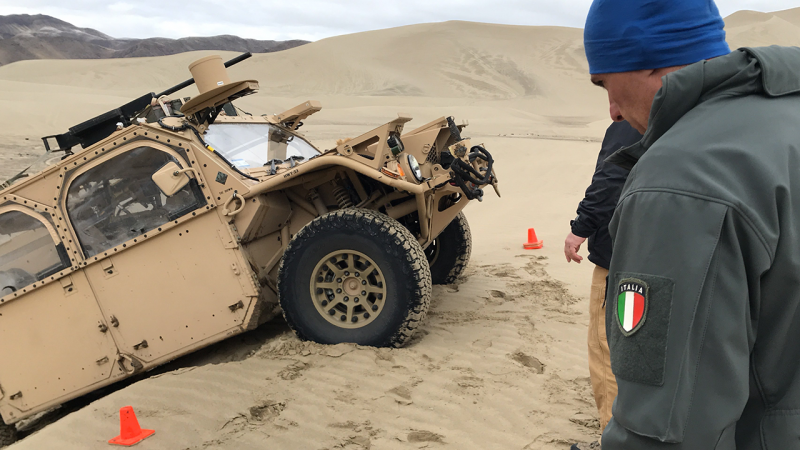
Italy purchased a small number of GMV 1.1 Flyer 72 armored cars. On photo Italian commando during the course of combat training in the US
Mobility
Mobility for MTR remains a key issue in all scenarios - in the air, at sea and on land. The latter is one of the most important, since most of the operations are completed on land, despite the fact that it often begins in the air. Lightweight mobile vehicles are the basis of many special operations. The largest SSO community in the world — the American command of special operations forces — has chosen for its GMV 1.1 program the General Dynamics - Ordnance and Tactical Systems Flyer 72. As often happens, this machine, originally developed for the SSO, is currently also being purchased for the army, first to equip brigade combat groups, later additional vehicles will be purchased for light and landing brigades. Currently, Italy is the only foreign customer to order 9 machines and 18 as an option. In March, the 2018 of the year before the delivery of these new armored vehicles of the Italian Ninth Parachute Assault Regiment Kol Moshin was trained in the United States.
French special forces ordered the VLFS 243 from Renault Trucks Defense. Net payload is 1,2 tons, maximum speed 120 km / h, power reserve 600 km
In the autumn of 2014, Polaris unveiled its new, ultra-light Dagor (Deployable Advanced Ground Off-Road) combat vehicle, which is currently operated by the MTR command in the 82 airborne division, as well as by a number of foreign operators, mainly from Europe, the Middle East and North America. In March 2018, the Polaris announced a new version of the Dagor A1. Gross weight increased from 3515 to 3856 kg, and load capacity from 1474 to 1814 kg. No information on the size of the machine; however, the new version can still be transported in the cabin of the CH-47 helicopter (two cars) and in the CH-53 helicopter (one car), as well as on the suspension of the same helicopters plus on the suspension of the UH-60 helicopter. Off-road patency has been improved by increasing clearance and installing new shock absorbers; A1 can be parachuted just like the original Dagor. In addition, the A1 configuration includes an energy management control screen built into the dashboard, advanced lighting options, integrated cabling, new functional components and enhancements aimed at extending the life of the platform. In January 2018, the Canadian MTR began to receive the first cars from the 62 ordered ultra-light combat vehicles Ultra-Light Combat Vehicle. In fact, these are machines in A1 version, modified for Canadian requirements.
As for Europe, among the latest developments we see the French VLFS (Traffic Leger Forces Speciales - a light vehicle for special forces) by Renault Trucks Defense, whose prototype was presented at the SOFINS 2017 exhibition. In the car VLFS 4x4 with a full weight of 4,2 tons and a carrying capacity of 1,2 tons, a turbocharged Iveco diesel engine with a capacity of 200 hp is installed, coupled with a five-speed automatic transmission. The chassis of this car is based on a tubular design, it has a length of 4,357 meter, a width of 2,2 meter and a height of 2,04 meter, a wheelbase of 3 meter and a ground clearance of 0,32 meter. Vehicle suspension VLFS dependent - continuous axles with springs / dampers plus pneumatic wheels 275 / 80 R20. The machine develops speed 120 km / h on flat surfaces, the maximum power reserve is more than 600 km; it can cross the slope of 60%, side slope of 30%, trench of 0,5 meter, vertical obstacle of 0,35 meter and water barrier to the depth of 0,5 meter. The car can be transported inside the aircraft A400M and C-130J. Optional equipment includes anti-mine and anti-bullet protection, a centralized tire pressure control system, anti-rim wheels, a winch, a front safety fence and a wire cutter. In total, the contract provides for the supply of 243 serial machines, scheduled for 2019 year.
Introduced in April 2018, an ultra-light protected vehicle with a specific power 50 hp / t is designed for CCO and special internal security teams.
At the DSA 2019 exhibition, two Malaysian companies presented their proposals for the MTR tender, which the Malaysian army and the companies Kernbara Suci and Cendana Auto should start soon. Weststar offered a car based on Toyota chassis, while Nimr from the UAE is promoting its armored car Nimr RIV to participate in this tender, possibly together with a local company.
In April, the Israeli company Plasan announced the latest addition to its vehicle portfolio - the Yagu ultra light three-seater. With a dry weight of 1480 kg and a payload of 350 kg, the engine capacity is 95 hp provides 53 hp / t power density. The car is based on the Arctic Cat Wildcat 4 1000 chassis with front double A-arms and rear trailing arms, which guarantees good off-road maneuverability. The Yagu car is very compact, has a width of just 162 cm, two seats are installed in front and one in the back center; It can be transported on C-130 Hercules transport aircraft. All-view protection corresponds to the B6 + level (STANAG 4569 2 level, 5,56 and 7,62 mm bullets). The car can be equipped with a light weapon module.
French company CILAS recently unveiled its lightweight laser pointer DHY 208, allowing advanced aviation gunners to mark the object for further transmission to the aircraft airborne target designator
Optoelectronics
One of the latest solutions in this area was presented by the French company CILAS, well-known for its family of ground laser designators DHY 307. At least 70 mJ of energy is needed for targeting a guided bombs, and the company's target designators provide more than 80 mJ, which is more than enough to generate the necessary laser power. The mass of a standard target indicator with a battery is rarely less than 6 kg. However, today the majority of aircraft carry on board their own index, so aviation spotters are often required to accurately indicate the target for the designator. 30 mJ is sufficient for this, which can significantly reduce the mass of devices. In response to the needs of the French MTR, CILAS developed the DHY 208 ultra-compact laser pointer, which weighs less than 2 kg with a battery and a fire call button. The optical identification channel has an increase of x7; The device complies with the requirements of the STANAG 3733 standard and is distinguished by a laser pointer with a power of 750 mW. DHY 208 can be used as a laser rangefinder at distances up to 4 km, and can optionally be equipped with a GPS and a digital compass. When marking the target by an advanced aviation gunner with the help of this system, the laser beam is captured by the tracking device of the onboard target designator, which eliminates any pointing errors. CILAS has begun production of DHY 208, but does not supply it yet.
communication
In March 2018, Harris announced the launch of the AN / PRC-163 manual radio station, also known as the “Army Radio Station”. It provides simultaneous operation of two channels, allowing you to maintain contact with the lower and upper echelons. One channel can operate in the UHF band (225-450 MHz) and the L / S bands (1,3-2,6 GHz), while the second can work in the UHF and UHF bands (225-512 MHz), the satellite communication system MUOS ( Mobile User Objective System), UHF-band satellite communications and can be used as a warning device when detecting radio frequency traffic in the 30-2600 MHz band. The programmable radio station supports several different communication protocols, narrowband and broadband transmission, transmission of encrypted voice messages and data.
Output power ranges from 250 mW to 5 W in VHF / UHF mode and 10 W in satellite mode. The radio station can withstand diving to a depth of 20 meters, has a mass of 1,13 kg with a battery, whose lifetime is estimated at 6-7 hours with the simultaneous operation of both channels. In developing the AN / PRC-163, the experience gained by Harris with the STC radio station, developed in accordance with the strict requirements of the US SSO command, was used. The company hopes that the new radio station will be popular with MTRs of other countries.
The Turkish company Aselsan has developed the Meerkat system in order to provide special forces with the basic means of electronic warfare.
Situational awareness is a multispectral business, and the radio frequency spectrum often confirms what other sensors have discovered. In order to provide special forces with the basic means of electronic warfare, the two companies have recently released compact products warning of signal transmission. The Turkish company Aselsan has developed a Meerkat spectrum monitoring system that operates in the 20-6000 MHz band and is controlled by devices running Android OS. In a small-sized device, dimensions 65x100x22 mm and weight 500 grams without battery, built-in GPS; it can also be equipped with concealed / camouflaged antennas. The Danish company MyDefence offers its Wingman 101 system, which can receive signals in the 70-6000 MHz band and give an audible, vibrational or visual warning to the operator. Algorithms capable of detecting and classifying the radio frequency exchange between UAVs can be embedded in both systems.
On the materials of the sites:
www.nationaldefensemagazine.org
www.sigsauer.com
www.imisystems.com
www.ruag.com
www.baesystems.com
www.heckler-koch.com
www.kale.com.tr
iwi.net
diodon-drone.com
www.wbgroup.pl
www.stm.com.tr
www.difesa.it
military.polaris.com
www.army-technology.com
www.arquus-defense.com
www.plasan.com
www.harris.com
www.aselsan.com.tr
www.cilas.com
www.milinfo.org
gundigest.com
pinterest.com
www.wikipedia.org
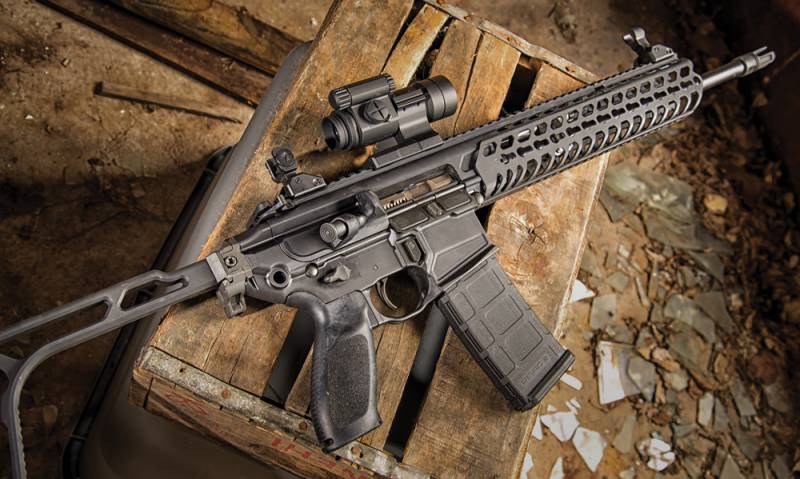
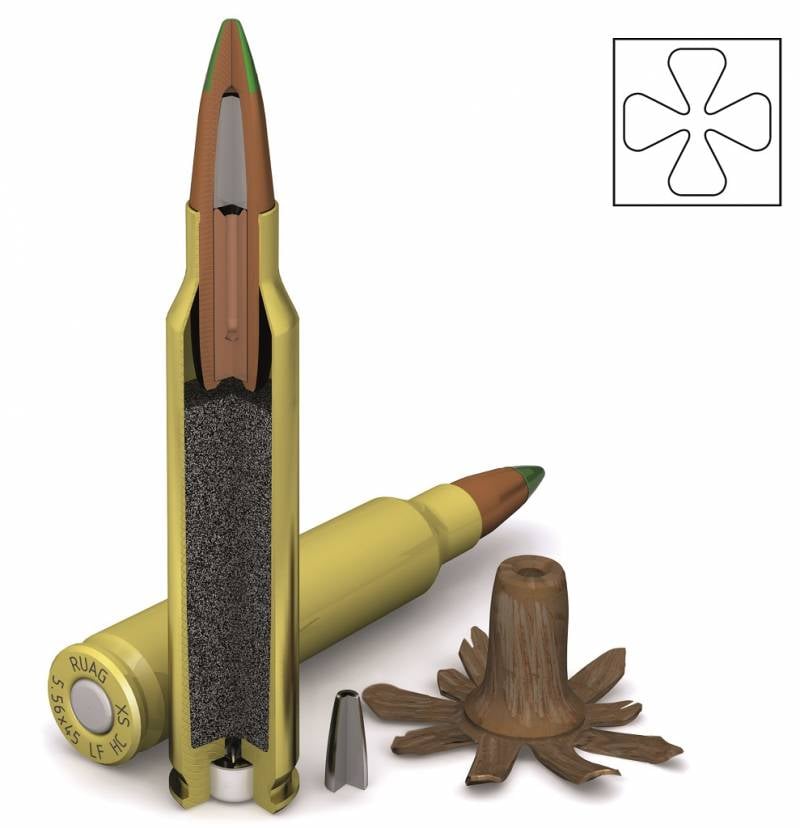
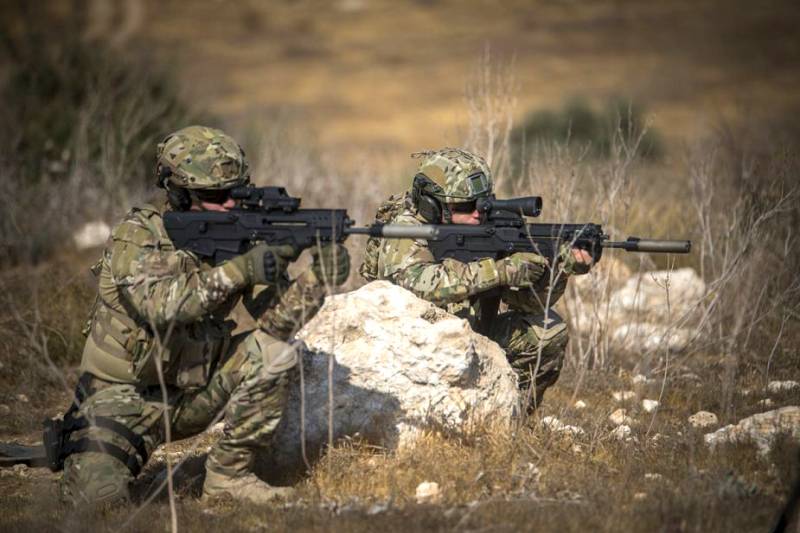
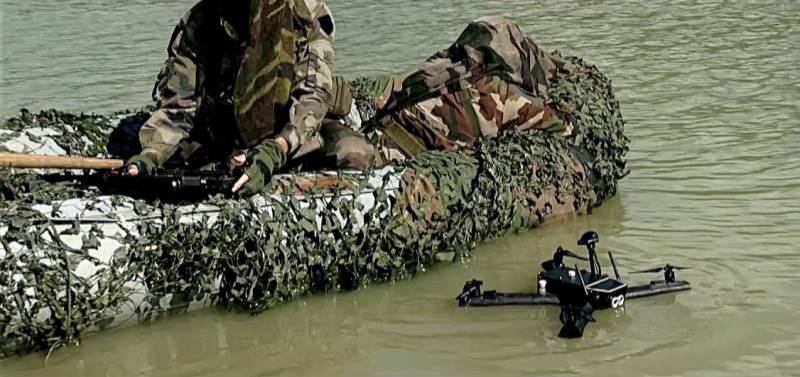
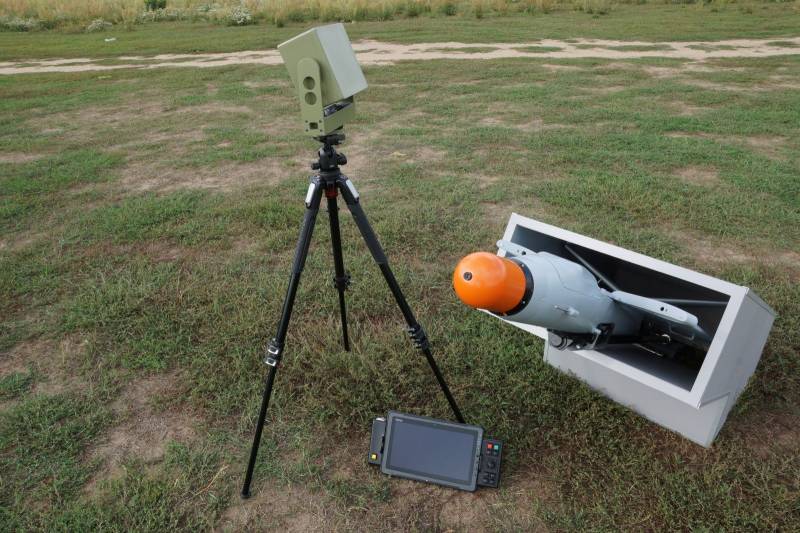
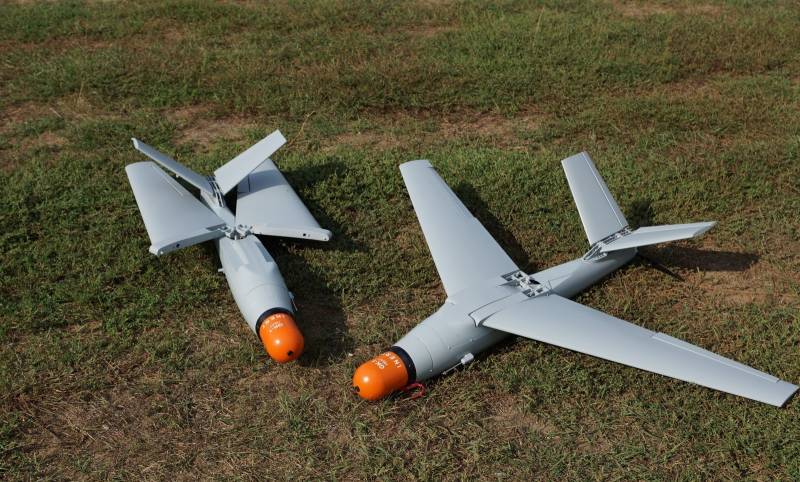
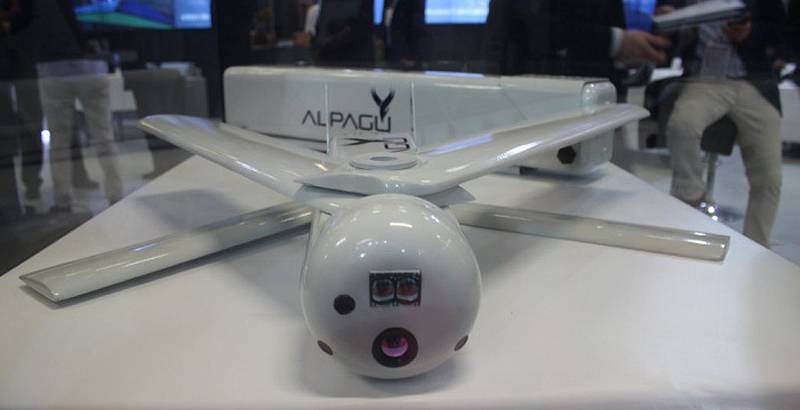
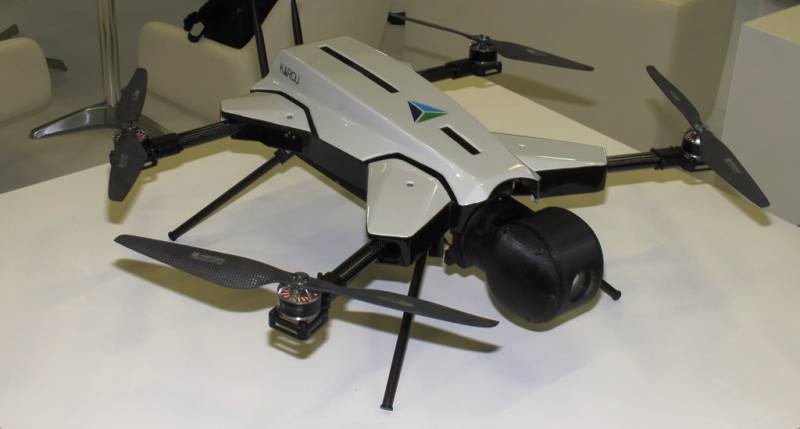
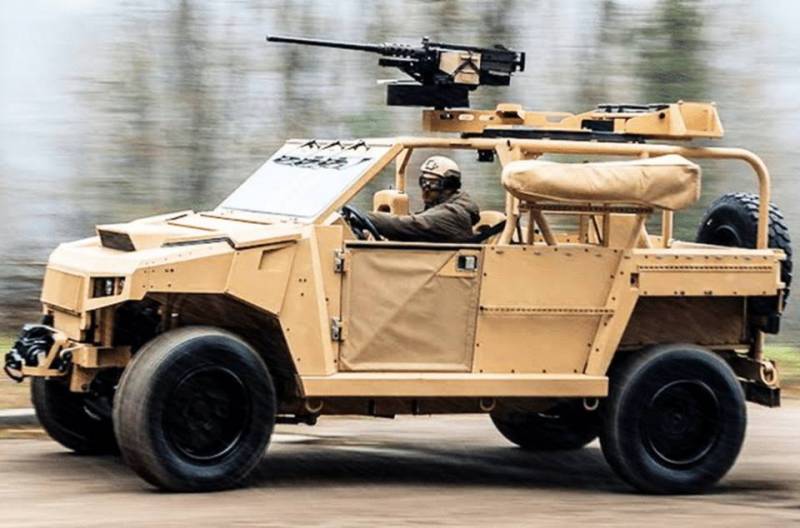
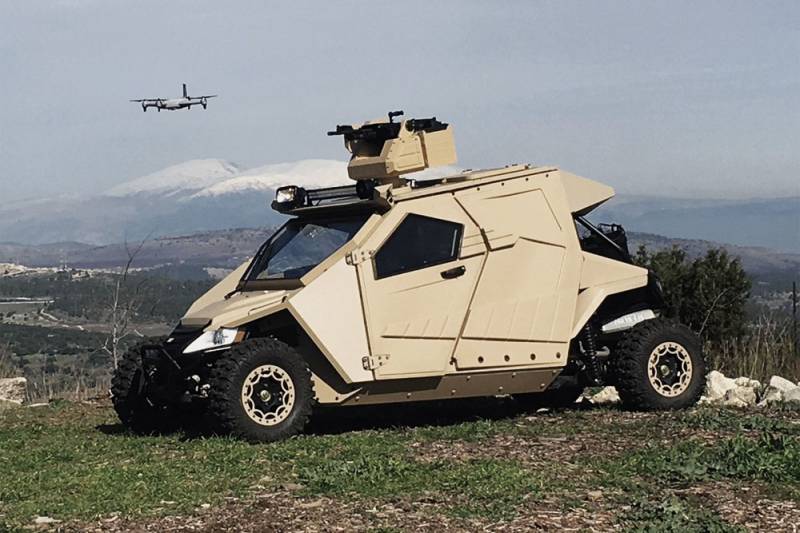
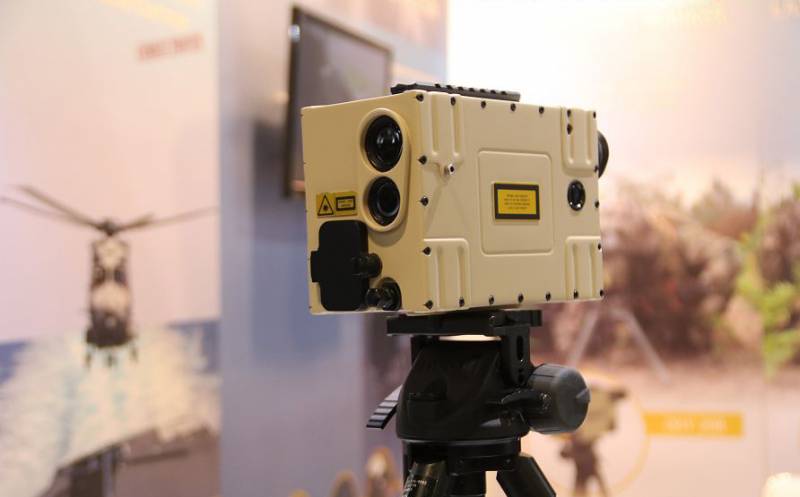
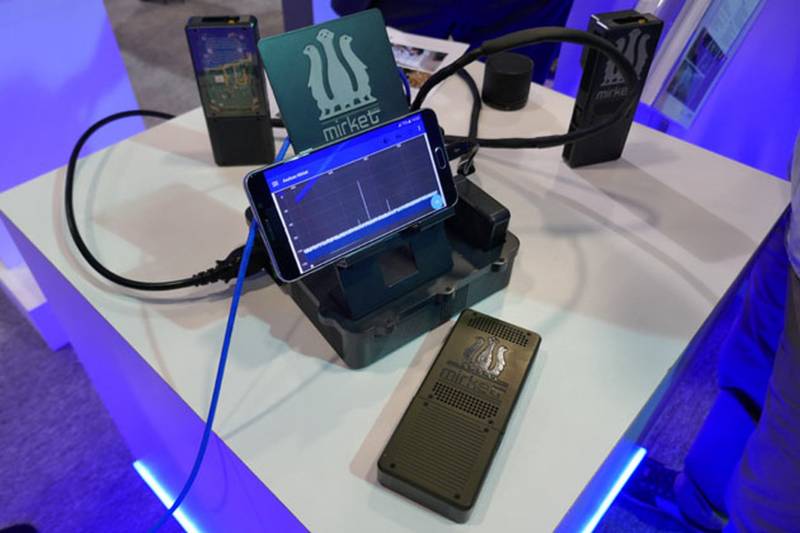
Information